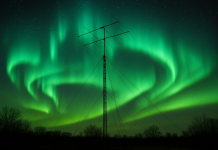Scientists recently studied 21 mysterious space signals from revised Third Cambridge Catalogue.
Researchers detected significant X-ray emissions for 9 radio sources, but none of these were found to have optical or ultraviolet counterparts. This suggests they may stem from ‘heavily obscured’ active galaxies.

At the end of last year, researchers using Nasa’s Swift space observatory launched an investigation to study a group of mysterious radio sources first detected nearly six decades ago.
For four months, the team observed 21 bright radio sources from the revised Third Cambridge Catalogue, leading to the detection of ‘significant’ emissions for nine of them with the X-ray Telescope.
But, when using the spacecraft’s Ultraviolet/Optical Telescope, no sources could be found.
These new observations support earlier assumptions that the source of these emissions may be ‘heavily obscured’ active galaxies:
These hidden galaxies are located in the “Zone of Avoidance.” Until now this region of space has remained hidden from view because of the gas and dust of the Milky Way which blocks light at optical wavelengths from reaching telescopes on Earth.
By using CSIRO’s Parkes radio telescope to detect radio waves that can travel through our galaxy’s gas and dust, hundreds of new galaxies have been found in the region of space known to astronomers as the “Zone of Avoidance.”
In the search for alien life, China has built the world’s biggest radio telescope, which it says could lead to discoveries beyond our wildest imagination. The Five-hundred-metre Aperture Spherical Radio Telescope (FAST), nestled between hills in the mountainous region of Guizhou, began working this week.
The next amazing space discovery is just steps away!












